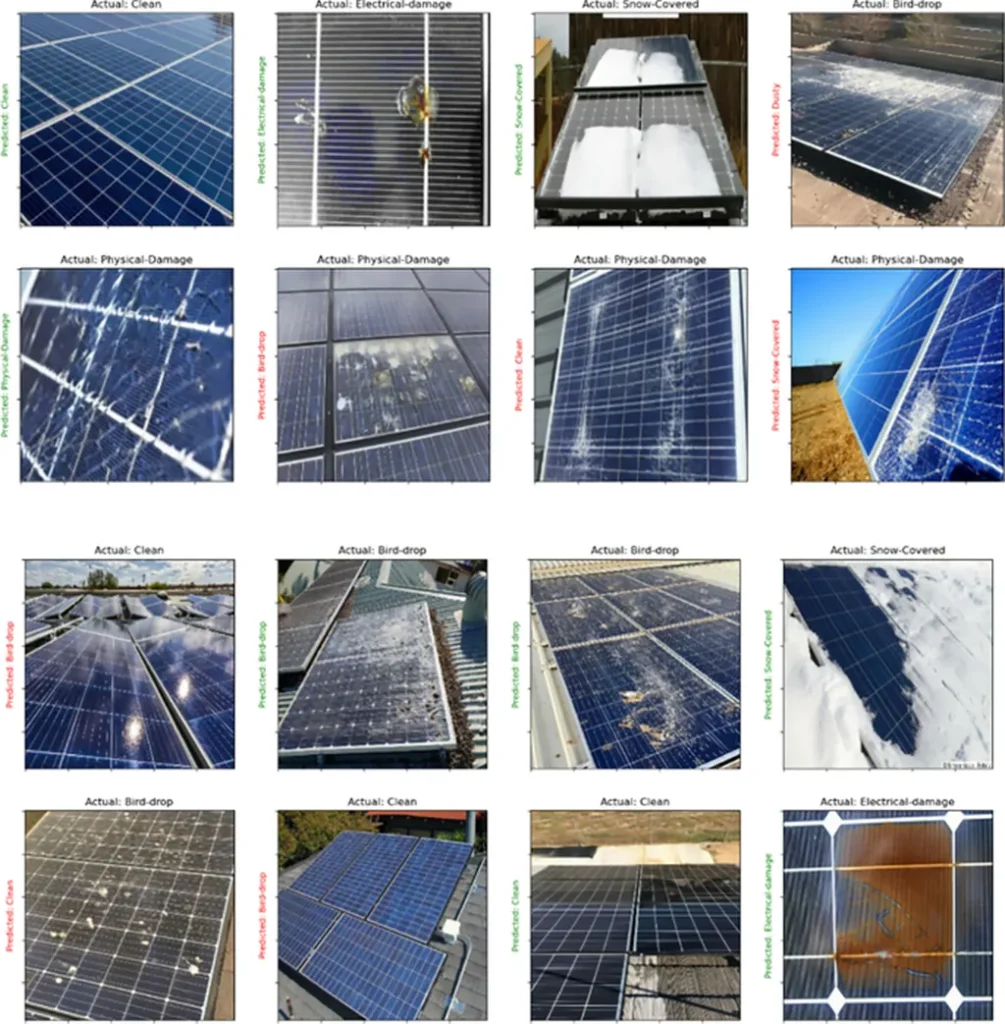In the relentless pursuit of optimizing solar power plant efficiency, a groundbreaking study has emerged that could revolutionize how we maintain and repair solar modules. Rizqia Cahyaningtyas, a researcher from Gunadarma University, has developed a deep learning-based system capable of identifying and classifying surface defects on solar modules with remarkable accuracy. Published in the International Journal of Advances in Intelligent Informatics, this research promises to accelerate the maintenance process and ensure optimal power production.
Solar modules, the backbone of any solar power plant, are designed to withstand extreme weather conditions. However, continuous usage can lead to defects such as dirt accumulation, burns, cracks, and snail tracks, which hinder their energy production capabilities. Cahyaningtyas’s study proposes a solution to this persistent challenge. “Our goal was to develop a system that could reliably diagnose solar module defects using RGB images,” she explained. “By leveraging deep learning, we aimed to streamline the maintenance process and minimize downtime.”
The research utilized a dataset of 8,370 images, including primary data from a mini solar power plant at the Renewable Energy Laboratory of PLN Institute of Technology and secondary data from public repositories. To overcome the limitation of fewer images in each category, the team employed data augmentation techniques. The proposed classification model combined Deep Convolutional Neural Networks (DCNN) with transfer learning models—DenseNet201, MobileNetV2, and EfficientNetB0—to perform supervised image classification.
The results were impressive. The combination of DCNN with DenseNet201 achieved the highest classification accuracy of 97.85%, outperforming DCNN + EfficientNetB0 (97.25%) and DCNN + MobileNetV2 (94.98%). This high accuracy rate indicates that the system can reliably identify and classify defects, supporting its application in solar power plant maintenance management.
The implications of this research are significant for the energy sector. By accelerating the process of identifying panel defects and determining their types, solar power plants can perform maintenance or repairs more efficiently. This not only ensures optimal power production but also extends the lifespan of solar modules, reducing long-term costs. “This system has the potential to transform how we approach solar panel maintenance,” Cahyaningtyas noted. “It’s a step towards smarter, more efficient energy production.”
As the world continues to shift towards renewable energy, innovations like this are crucial. The study demonstrates the potential of deep learning in enhancing the efficiency and reliability of solar power plants, paving the way for more sustainable energy solutions. With further development and implementation, this technology could become a standard tool in the maintenance toolkit of solar power plants worldwide, ensuring they operate at peak performance.
In the rapidly evolving field of renewable energy, Cahyaningtyas’s research stands out as a beacon of innovation. It highlights the power of artificial intelligence in addressing real-world challenges and offers a glimpse into the future of solar energy maintenance. As the energy sector continues to grow, such advancements will be instrumental in meeting global energy demands sustainably and efficiently.

